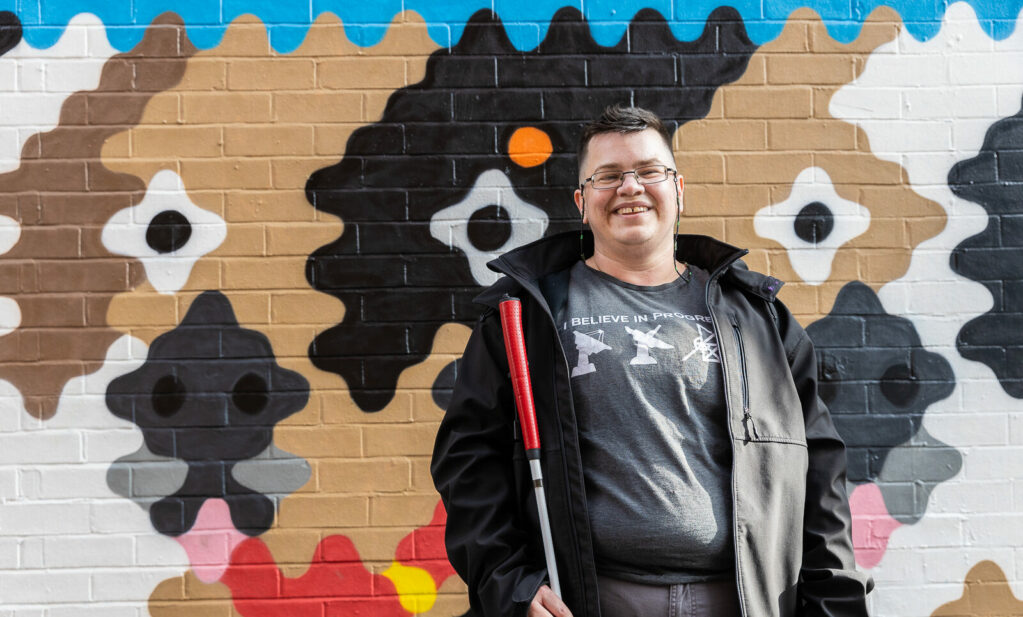An accessible Routemaster?
Transport for All
In late December 2005, Transport for All initiated...
In late December 2005, Transport for All initiated a high profile media campaign to put forward an alternative viewpoint in the maelstrom of Routemaster nostalgia.
We were there when the last Routemaster rolled into Brixton on it’s last ever journey -but our banners read ‘Routemaster good riddance!’ and we attracted a huge amount of hostility from the routemaster fanatics. Our message was clear – yes the old bus was a London icon, but it was also an icon of an inaccessible London – where disabled people and especially wheelchair users were barred from bus travel.
With the Routemaster taking its place in the Transport Museum we thought that that would be where it would stay. That is, until Mayor Johnson took over the reins at City Hall. The Routemaster was apparently to be re-incarnated for a new age – with accessibility as a feature!
TfA member and Chair of the Southwark Disablement Association, Patrick Horan worked with the designers of the eventual winning design.

Here he speaks about his experiences:
How did you get involved in designing the accessible Routemaster?
During May 2008 I was horrified to learn that the Mayor, fresh from his election victory was serious about building a new Routemaster bus, as I had been a serious detractor of the original for many years because it was completely inaccessible. What shocked me even more was that the Transport Commissioner Peter Hendy, and the TfL operation manager Mike Weston, seemed to be backing the scheme. I then contacted one of the designers, Capoco, and offered my services for free. My involvement was to design the wheelchair space and combine it with a single pushchair space, and this I have done.
What was Capoco’s attitude to accessibility?
Excellent. It was in my brief, and it was a priority for them. Some of the questions they asked were:
Are there any immediate comments on the basic layout?
What features should be added to aid its use?
What space is needed behind (towards the rear of the bus) the 1.4m long wheelchair bay?
Does this layout improve on the current buses in any way?
Are there other accessibility considerations that can be incorporated, beyond the current DDA specifications?
Can you talk through your design ideas?
The first seat opposite the wheelchair space should be big enough to accommodate one pushchair and an attendant sitting down, and should have a sign similar to the wheelchair space “priority for pushchairs“. This would take care of the problem of wheelchair users and buggies fighting for the one space. The door should open horizontally, and not inwardly. The disabled stop bell should be sited in an area where it cannot be pressed accidentally or mistaken for a regular stop bell.
Do you really think prams and wheelchairs can and should share the same place?
They can and they should. It has to happen, and the sooner TfL incorporate this on all new deigns the better, and it can be done. Although wheelchairs supposedly have priority, I for one could not force a driver to throw a mother and her sleeping baby off a bus…. could you?
It is recognised that ‘bums on seats’ are a commercial priority, but there may be scope for improvements in layout for the first double seat opposite the wheelchair space. It might be possible to make this space slightly bigger to allow a passenger with a buggy to sit there when the wheelchair bay is occupied. Though this might not be perfectly comfortable, this would be offset by fact that both parties would be able to travel simultaneously.
Do you think the design will deal with the inaccessibility issues of the old bus?
If the design by Capoco is used by TfL it most certainly will, but I have not seen the design by the other joint winner, Aston Martin. TfL have stated that they will incorporate the best of both designs and send the final version to the bus builders.


